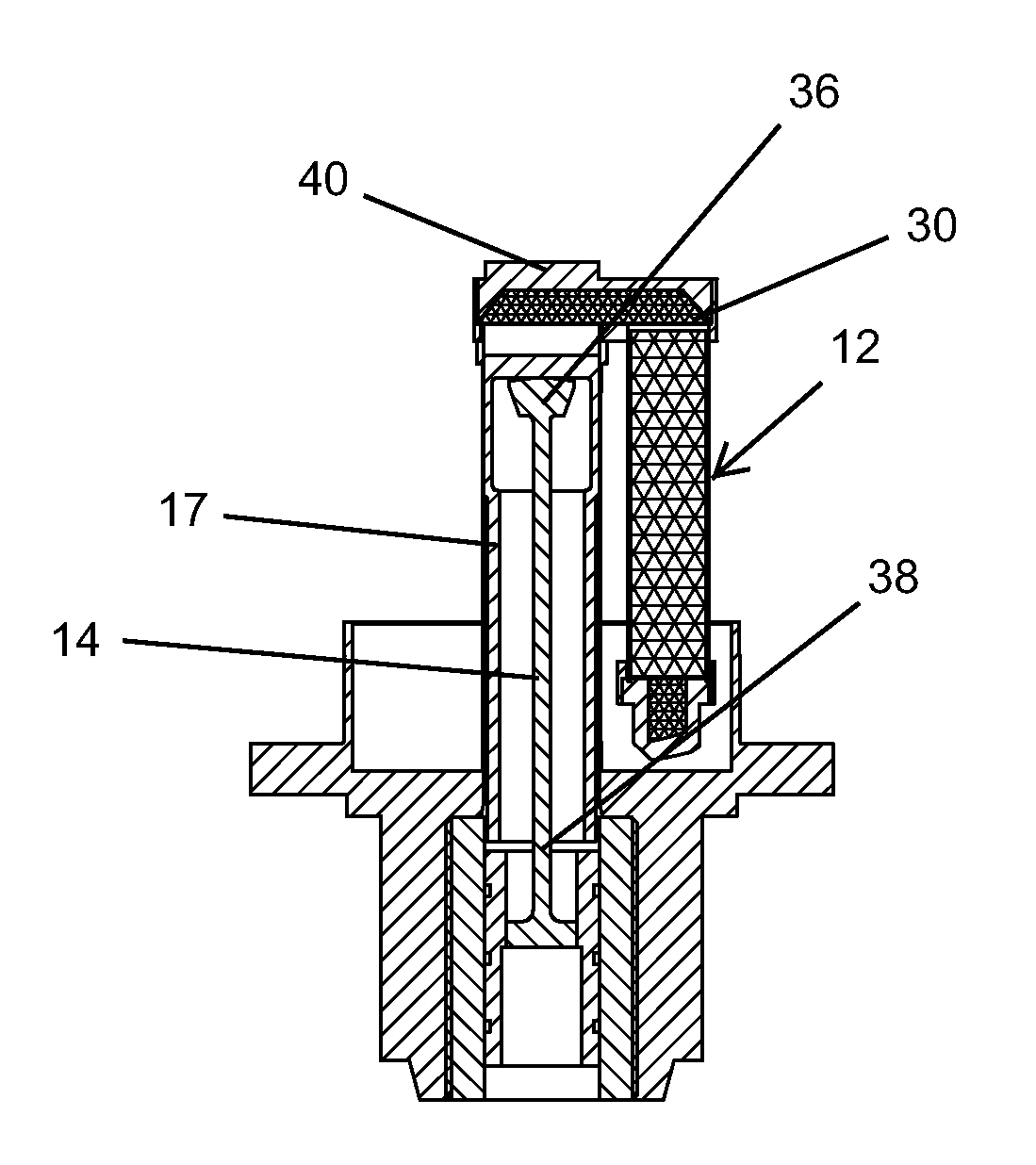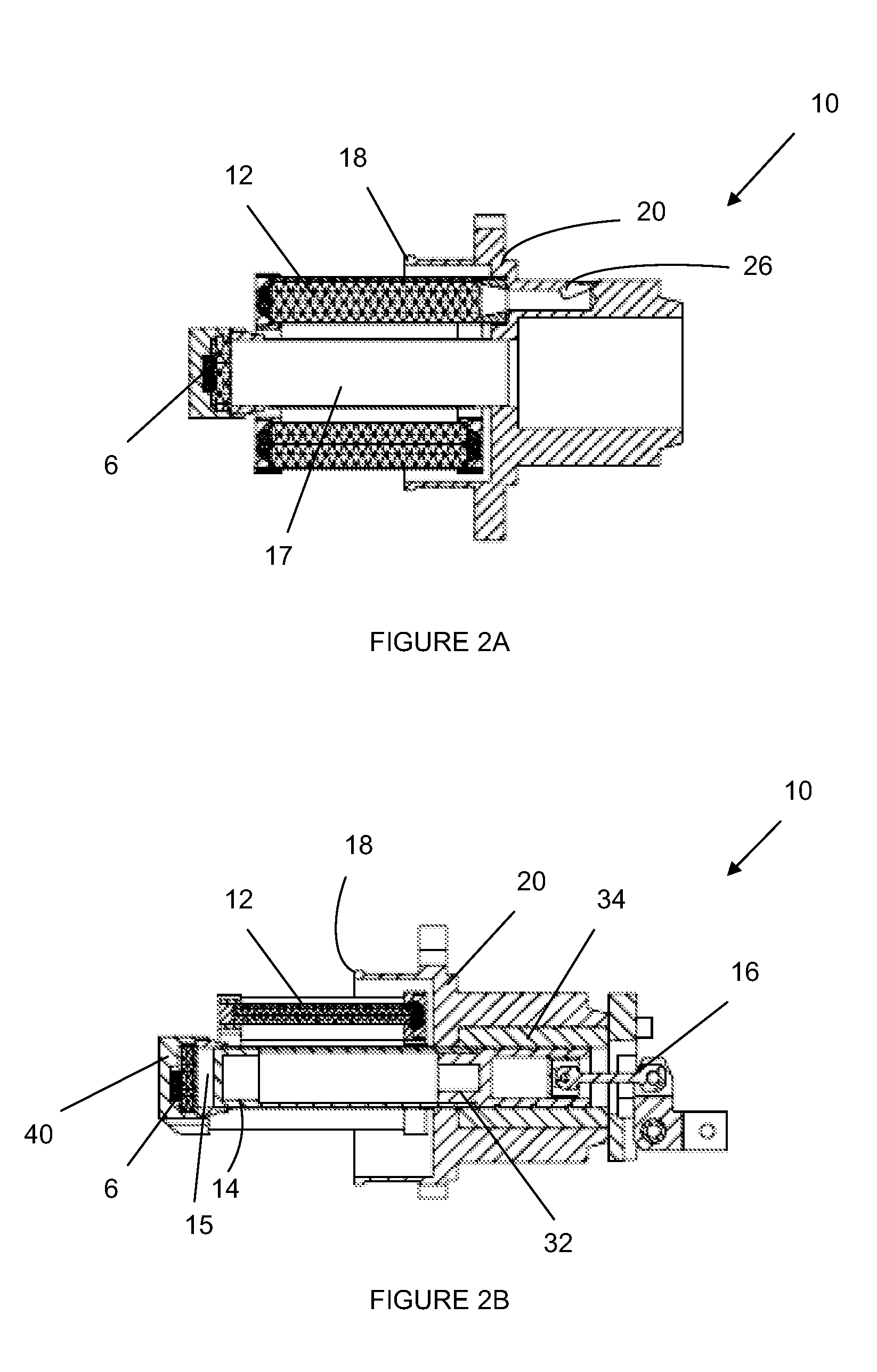Expander for Stirling Engines and Cryogenic Coolers
a technology for stirling engines and coolers, which is applied in special engines, refrigeration machines, gas cycle refrigeration machines, etc., can solve the problems of limiting the ability to miniaturize the overall cryogenic cooler, and achieve the effects of reducing heat conduction loss
- Summary
- Abstract
- Description
- Claims
- Application Information
AI Technical Summary
Benefits of technology
Problems solved by technology
Method used
Image
Examples
Embodiment Construction
[0030]Embodiments of the invention are directed to an expander unit 10, which is usable in a Stirling engine or in a cryogenic cooler for an IR camera. As illustrated in FIGS. 2A, 2B and 3, regenerator matrix 12 is decoupled from displacer unit 14. Inventive regenerator matrix 12 is static, i.e., it does not move when displacer unit 14 undergoes reciprocating motion to displace the working gas in the Stirling thermodynamic cycle. Displacer unit 14 is connected (not shown) to displacer drive linkage 16, which is connected to the Stirling engine's driving motor. Reciprocal motions by displacer 14 expand the working gas in expansion space 15.
[0031]In this embodiment, regenerator matrix or regenerator 12 is placed outside the displacer 14 and inside a vacuumed Dewar enclosure (not shown), which includes Dewar adapter ring 18. In this embodiment, displacer unit 14 is a cylinder with a closed distal end that forms part of expansion space 15. Displacer unit 14 is slidingly received in a cy...
PUM
 Login to View More
Login to View More Abstract
Description
Claims
Application Information
 Login to View More
Login to View More - R&D
- Intellectual Property
- Life Sciences
- Materials
- Tech Scout
- Unparalleled Data Quality
- Higher Quality Content
- 60% Fewer Hallucinations
Browse by: Latest US Patents, China's latest patents, Technical Efficacy Thesaurus, Application Domain, Technology Topic, Popular Technical Reports.
© 2025 PatSnap. All rights reserved.Legal|Privacy policy|Modern Slavery Act Transparency Statement|Sitemap|About US| Contact US: help@patsnap.com



